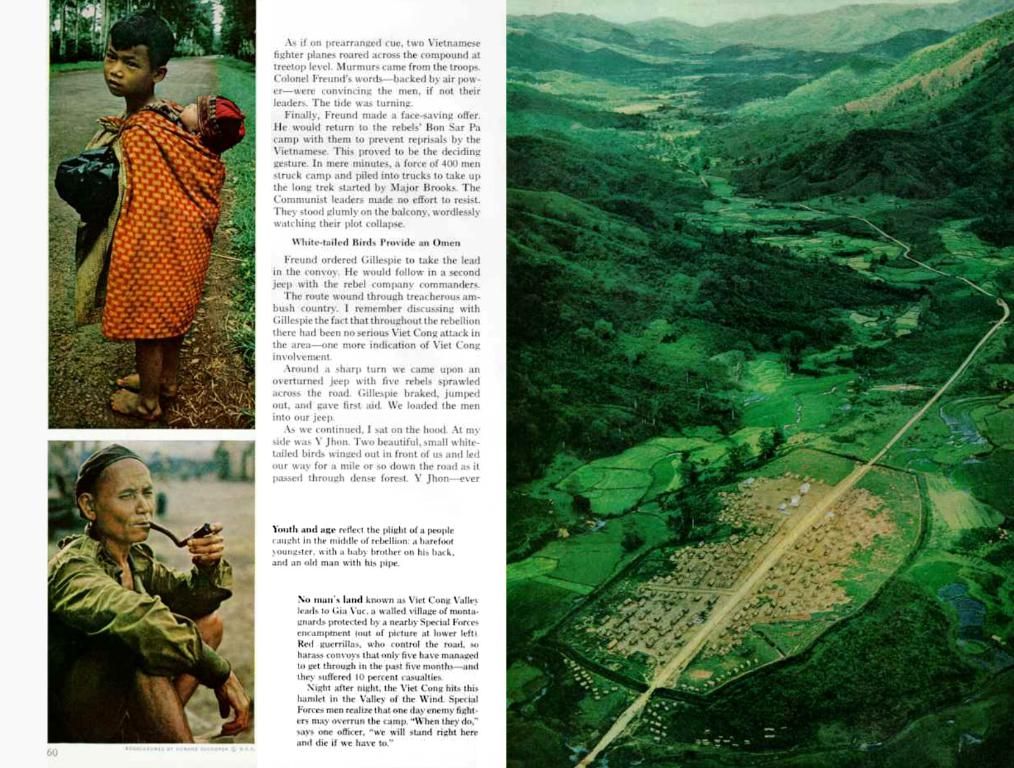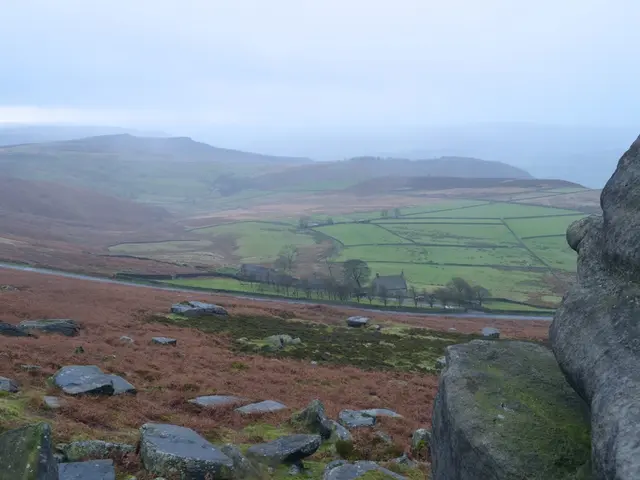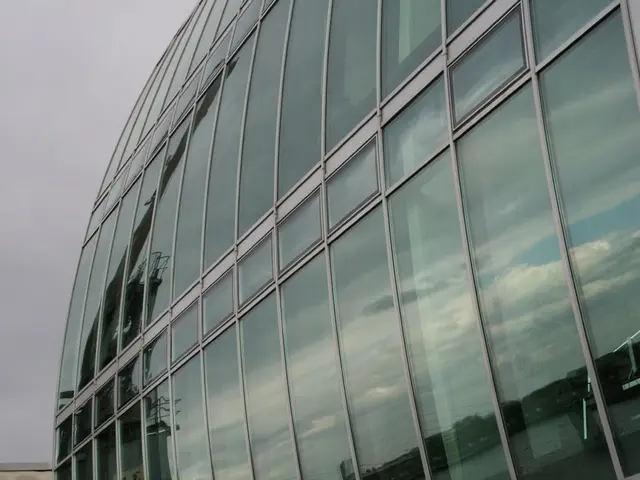High-tech Helpers on Mount Everest: Drones Take Over Cargo and Waste Duties
Aerial vehicles transport cargo to Mount Everest's summit.
Mount Everest, the world's highest peak, is no stranger to technology, and drones are simply the next step. These unmanned aerial vehicles are now in charge of valuable cargo transport and waste removal, making climbing safer for Sherpas and enhancing the overall experience.
In the Himalayas, drones are no longer just reserved for filming glaciiers or taking measurements. On Mount Everest's 8,849-meter summit, they're a lifesaver in more ways than one. These flying helpers are transforming work on the highest mountain on Earth, making it cleaner, easier, and ultimately safer for the dedicated Sherpa guides and climbers.
Raj Bikram Maharjan, CEO of Airlift Technology, explains their new role: "Our drones now carry ladders, tents, ropes, and oxygen bottles – tasks that previously took the Sherpas 7 hours to complete." The change makes the journey up the ice, snow, and thin air a whole lot smoother.
Behind the Scenes: Insights into China's FlyCart 30 Drone
The drones supporting the Sherpa teams, who help hundreds of climbers each year to conquer Everest, are the FlyCart 30 developed in China. These drones operate between the base camp and Camp 1, located above 6,000 meters. They've proven exceptionally useful in the Khumbu Icefall, a region known for its dangerous ice towers and crevasses.
Safer Passage: Hassle-free Khumbu Icefall Traversal
By using drones, climbers no longer need to make multiple trips through the notorious Khumbu Icefall. This passage is fraught with danger, as it lies above the base camp and requires skilled local specialists to find safest routes through its most treacherous zones, using ladders and ropes.
The introduction of drones in this region was a partnership between the Khumbu Pasang Lhamu municipality and DJI. At first, drones were used solely for waste disposal. However, after a successful trial period in spring 2024, they were taken over by Airlift. The municipality still supports the operation, collaborating with the Sagarmatha Environmental Protection Committee to maintain a safe route and remove waste from Everest and Ama Dablam, another nearby peak.
Power to Soar: Drones' Flight Time and Efficiency
DJI reported that a drone could transport up to 40 kilograms of cargo for 9 minutes using a single battery, or 30 kilograms for 18 minutes with dual batteries. While performance does decrease at higher altitudes, the increasing popularity of drone deployment is evident.
Last year, drones already transported oxygen bottles to Camp 1 and returned with waste. In the following season, they were also employed to map the Khumbu Icefall and find new routes, ensuring the safest possible passage for climbers.
A Safer Future for the Sherpas and Mount Everest
Concerns about the negative impact of drones on the employment of Sherpas have been addressed. Raj Bikram Maharjan assures that the Sherpas are happy about the change, as they no longer need to risk their lives in the dangerous Khumbu Icefall.
One critic, German mountaineer Jost Kobusch, prefers drones to helicopters when it comes to Mount Everest. Helicopters, used for filming, often produce noise pollution that negatively affects the region. Drones, if flown high enough, can be virtually silent, making the climbing experience more enjoyable for professional adventurers like Kobusch.
Traditional Transport vs. Modern Drones
For decades, mountaineers have relied on yaks, donkeys, and human porters to traverse the harsh Himalayan terrain. This traditional method has endured, despite the increased use of helicopters. However, the future may belong to drones, as they offer numerous advantages and a brighter, safer future for the Himalayas.
Airlift Technology, the company using drones on Mount Everest, expects a drone boom in the area. Nevertheless, the high costs of acquiring these high-tech devices could deter smaller outfitters from adopting them. However, with more widespread usage, costs are expected to decrease, making drones an increasingly accessible and affordable logistical solution.
Source: ntv.de, Dirk Godder and Roshan Sedhai, dpa
- Himalaya
- Mount Everest
- Drones
P.S. From the base camp to Camp 1, drones can transport up to 2.5 tonnes of supplies like equipment, oxygen cylinders, and 300 kg of waste[1][5]. Drones offer speed, efficiency, reduced risk, cost savings, and environmental benefits by removing waste, avoiding manual labor, and minimizing noise pollution[1][4].
- In the realm of education and self-development, an increasing number of resources and tutorials exist on the use and maintenance of drones, making them accessible to a broader audience who wish to learn about these advanced technologies.
- General news outlets have been covering the integration of drones in various industries, including mountaineering, where drones are not only changing the logistics of transporting equipment and waste on Mount Everest, but also revolutionizing sports, such as skiing and snowboarding, by capturing stunning aerial footage that enhances the practice and promotion of these winter sports.








